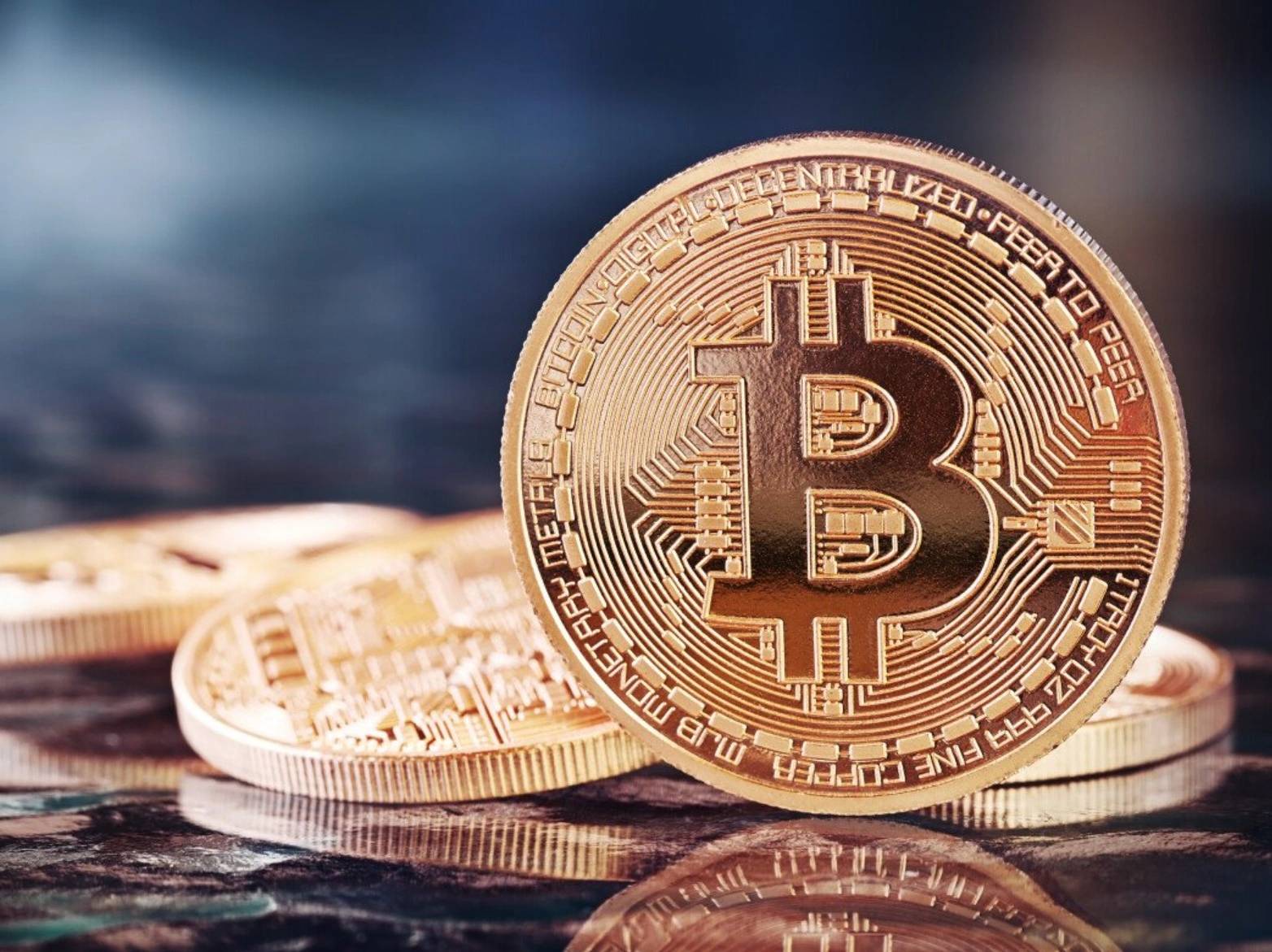위키 구독하기
Share wiki
Bookmark
Bitcoin (BTC)
Bitcoin (BTC)
**비트코인(BTC)**은 비트코인 블록체인의 기본 자산이며 중앙 은행이나 관리자가 없는 세계 최초의 디지털 통화입니다. 어떤 개인, 단체 또는 기관의 통제를 받지 않는 지불 수단으로 기능합니다. 거래를 검증하는 블록체인 채굴자에게 보상으로 주어지며 다양한 거래소에서 구매할 수 있습니다. 비트코인은 2009년에 사토시 나카모토(Satoshi Nakamoto)라는 익명의 개발자 또는 개발자 그룹에 의해 대중에게 소개되었습니다. [1][2]
역사
2009년: 출시 및 제네시스 블록
- 2009년 1월 3일: 비트코인의 제네시스 블록이 채굴되어 비트코인 네트워크가 생성되었습니다. 이 블록은 비트코인 네트워크를 시작했으며 BTC 공급량은 21,000,000개로 제한됩니다. [6]
2009-2017년: 초기 도입 및 성장
- 2009-2017년: 이 기간 동안 비트코인은 P2P 결제 수단으로 인기를 얻었습니다. 투자자와 투기꾼들이 BTC에 관심을 갖게 되면서 사람들이 비트코인을 사고 팔 수 있도록 하는 암호화폐 거래소가 등장했습니다. 가격이 상승하고 수요가 증가하여 2017년에는 디지털 통화의 가치가 1,000달러를 넘었습니다. [3]
2020년: 기관 투자 및 도입
- 2020년 10월: 금융 서비스 회사인 Square는 비트코인에 5,000만 달러를 투자했는데, 당시 총 자산의 약 1%에 해당합니다. [18]
- 2020년 11월: PayPal은 미국 내 모든 사용자가 PayPal 계정에서 직접 비트코인을 포함한 암호화폐를 구매, 보유 및 판매할 수 있도록 했습니다. [20]
- 2020년 12월: 169년 역사의 보험 회사인 MassMutual은 일반 투자 계정에 1억 달러를 비트코인에 투자했습니다. [19]
2021년: Taproot 업그레이드
- 2021년 11월: Taproot 업그레이드가 활성화되어 Schnorr 서명이 도입되어 개인 정보 보호가 강화되고 더 복잡한 스마트 계약이 가능해졌습니다. 이 업그레이드는 비트코인의 확장성과 효율성을 향상시켰습니다. [16]
2022년: 시장 변동성 및 폭락
- 2022년 5월: TerraUSD(UST) 스테이블코인의 붕괴로 투자자들 사이에 공황이 발생하여 비트코인 가격이 급락했습니다. [12]
- 2022년 6월: 인플레이션 상승과 경기 침체 가능성에 대한 우려 속에 비트코인 가치가 20,000달러 아래로 떨어졌습니다. 이러한 하락세는 다양한 암호화폐 회사에 영향을 미쳐 감원을 초래하고 시장 불안정을 더욱 심화시켰습니다. [12] [1]
2023년: 비트코인 ETF 승인
- 2023년 10월: 미국 증권거래위원회(SEC)가 최초의 비트코인 상장지수펀드(ETF)를 승인하여 투자자들이 자산을 직접 보유하지 않고도 비트코인에 투자할 수 있게 되었습니다. [1] [2]
2024년: 비트코인 가격 급등 및 전략적 개발
- 2024년 1월: 현물 비트코인 ETF가 거래를 시작하여 기존 투자자에게 더욱 접근 가능한 투자 옵션을 제공함으로써 암호화폐 업계의 주요 발전을 이루었습니다.
- 2024년 12월: 트럼프 행정부가 도입한 새로운 암호화폐 친화적인 정책에 대한 낙관론에 힘입어 비트코인 가격이 10만 달러를 돌파했습니다. [13]
- 2024년 12월: BlackRock은 관심 있는 투자자들에게 포트폴리오의 최대 2%를 비트코인에 배분하는 것을 고려할 것을 권장했습니다. [2]
2025년: 전략적 비트코인 비축
- 2025년 3월: 트럼프 대통령은 전략적 비트코인 비축을 설립하는 행정 명령에 서명하여 미국을 약 20만 BTC를 보유한 것으로 알려진 최대 비트코인 보유 국가로 자리매김했습니다.
유틸리티 및 영향
비트코인은 처음에 P2P 결제 수단으로 설계 및 출시되었습니다. 그러나 가치 상승과 다른 블록체인 및 암호화폐의 경쟁으로 인해 사용 사례가 확장되었습니다. 비트코인은 상품 및 서비스에 대한 결제 수단으로 상인, 소매업체 및 상점에서 받아들여집니다. [3]
비트코인 채굴
비트코인(BTC)은 사용자가 자신의 컴퓨팅 성능을 제공하여 작업증명을 통해 블록체인에 비트코인 거래를 검증하고 기록하는 경쟁에서 보상으로 생성됩니다. 이 활동을 채굴이라고 하며 성공적인 채굴자는 거래 수수료와 새로 생성된 비트코인으로 보상받습니다. [5]
기관 투자 및 도입
최근 몇 년 동안 여러 대기업과 기관이 비트코인에 상당한 투자를 함으로써 장기적인 가치에 대한 신뢰가 커지고 있음을 보여주었습니다. 비즈니스 인텔리전스 회사인 MicroStrategy는 주요 재무 준비 자산으로 비트코인에 대규모 투자를 한 대표적인 기업입니다. [17]
Taproot 업그레이드 세부 정보
2021년 11월에 활성화된 Taproot 업그레이드는 비트코인 네트워크에 여러 가지 주요 변경 사항을 가져왔습니다. Schnorr 서명을 도입하여 다중 서명 거래를 읽을 수 없게 만들어 복잡한 거래를 단순한 거래와 구별할 수 없도록 하여 개인 정보 보호를 강화합니다. [16]
환경 문제 및 채굴
비트코인 채굴의 환경적 영향은 여전히 논쟁의 여지가 있습니다. 2023년에 여러 채굴 회사는 비트코인 채굴과 관련된 탄소 발자국을 줄이기 위해 재생 에너지원을 사용하는 계획을 발표했습니다. 이러한 변화는 암호화폐 업계의 지속 가능한 관행으로의 광범위한 추세의 일부입니다.
비트코인과 금융 자유
2022년 캐나다 "자유 대열" 시위 중에 비트코인은 금융 자유를 위한 도구로 주목을 받았습니다. 캐나다 정부는 시위와 관련된 은행 계좌를 동결했고, 이로 인해 지지자들은 운동 자금 조달을 위해 비트코인과 다른 암호화폐로 눈을 돌렸습니다. 이 사건은 비트코인이 검열 저항적인 금융 도구로서의 잠재력을 보여주었습니다. [3] [11]
잘못된 내용이 있나요?
